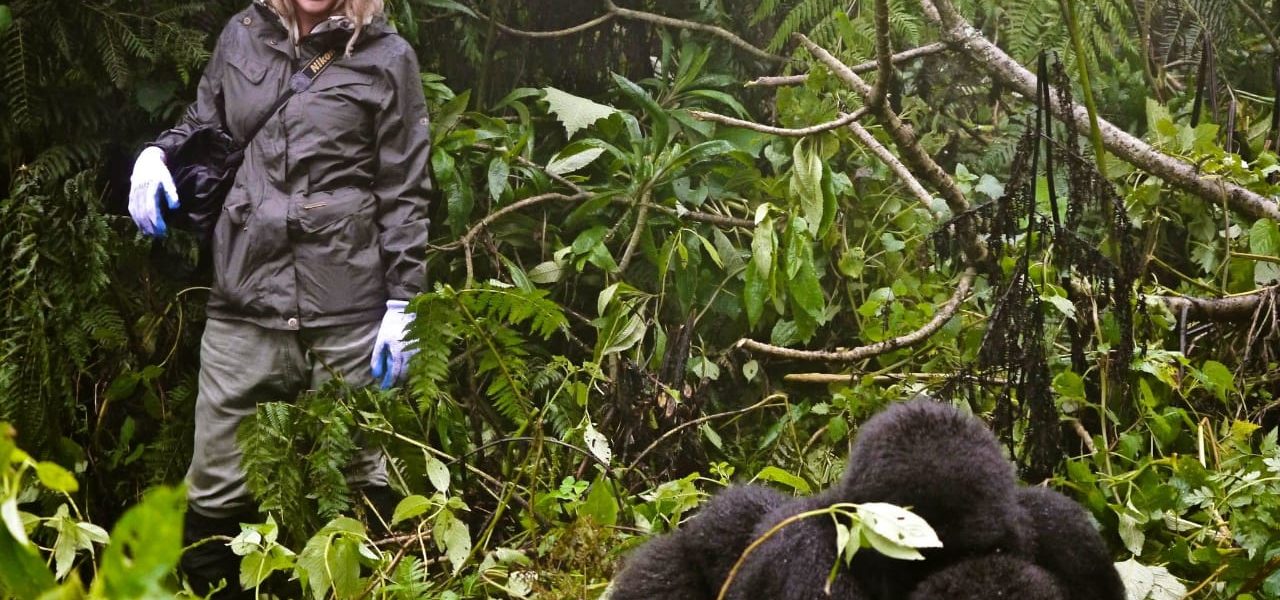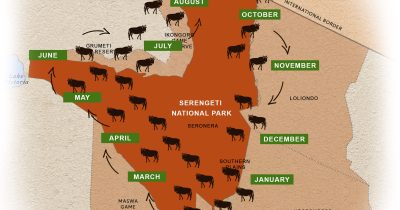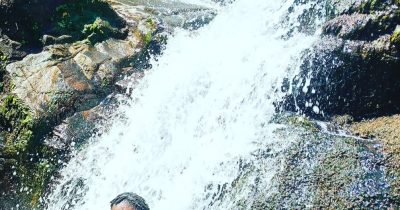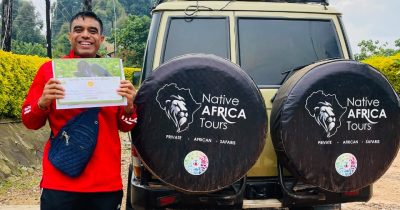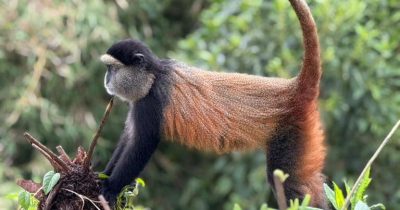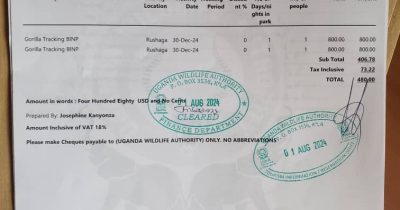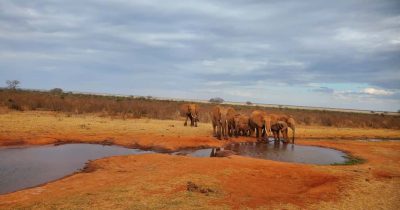Gorilla Trekking During the Rainy Season: What You Need to Know
Gorilla trekking is one of the most flexible safari experiences. Not only can you engage in gorilla trekking during the peak dry season alone, but also during the rainy/wet season. Despite the challenges, you can arrange a guided safari to enjoy gorilla trekking during the rainy season. Booking a gorilla trekking tour during the rainy season offers significant benefits.
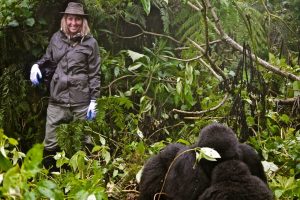
When does the Rainy Season Occur?
A typical off/wet/rainy season starts from March, April, to May. These mark the longest damp or rainy season, whereas the shortest rainy months fall in October and November. Despite unpredictable weather, guests can still undertake a trek to see gorillas. Tailoring your gorilla safari to the rainy season lets you enjoy a budget-friendly gorilla trekking adventure.
What to Pack for a Wet Season Gorilla Adventure
List of the items to carry for your gorilla trekking in Africa during the rainy season includes a waterproof rain jacket, a daypack (waterproof), thick socks, a pair of long trousers, a pair of gardening gloves, and waterproof walking or trekking boots. Other items you can bring include a good camera, a sweater, bottled water, and neutral-coloured clothes.
Why go for a Gorilla Trek during the Wet Season?
Off/Low Season with Discounted Offers
Taking a trip to enjoy gorilla trekking during the rainy season allows you to benefit from discounted offers available during the off/low season. The rainy season is a typical off/low season, and most lodges or camps tend to cut rates on accommodation and transportation. The availability of discounted offers during the rainy season provides an opportunity for budget or backpacker tourists to also participate in the trek with African mountain gorillas/Eastern Lowland gorillas.
Discounted offers are common during the rainy season compared to the dry/peak months of the year. If you are on a tight budget or interested in discounted gorilla trekking offers, consider it a must to book a gorilla safari with Native Africa Tours during the rainy season.
Lush Greenery and Fewer Crowds
Given the abundant rainfall during the rainy season, vegetation in most parks becomes more spectacular. Expect to enjoy scenic views of the lush rainforest and bamboo forests. During the rainy season, the number of trekkers also decreases, allowing you to enjoy a less crowded gorilla trekking experience.
Meet Gorillas with Ease.
Unlike the dry season, when gorillas often move over longer distances due to food scarcity, the rainy season offers plenty of food. Gorillas tend to stay in the near vicinity because they have something to eat, which isn’t the case during the dry season, resulting in a reduction in the food supply. During the dry season, gorillas must search for food, forcing you to spend longer hours tracking them to their feeding locations.
What is Gorilla Trekking?
Gorilla trekking offers a typical guided walking experience. Guests engage in a guided search for mountain gorillas on a tour led by an experienced guide from the respective national park. Gorillas reside in the misty forests and only survive in the wild. A guided gorilla trekking expedition in the lush forest to locate a group of gorillas rewards the effort, energy, and money invested.
Best Places for Gorilla Trekking in the Wet Season
Uganda, Rwanda, and Congo are the only 3 African countries with mountain gorillas. On the entire globe, mountain gorillas remain fewer than 1063 individuals in the African jungle. These great apes reside in the tropical rainforest-dominated protected areas of Bwindi, Mgahinga, Virunga National Park, and Volcanoes National Park.
Bwindi Impenetrable National Park
Located in Kanungu District, southwestern Uganda, Bwindi Impenetrable National Park is a lush rainforest conservation area with about 459 mountain gorillas. Bwindi, a UNESCO World Heritage Site in Uganda, is home to about 25 groups of mountain gorillas. The park features four sectors, two of which are on the southern side. To the north, Bwindi features the Buhoma region, and to the east, the Ruhija sector.
The southern gorilla sectors of Bwindi include Nkuringo and Rushaga. On a visit to Bwindi, expect to explore gorilla families such as the Nshongi gorilla group, the Rushegura family, the Nkuringo, the Mubare group, the Bitukura gorilla family, the Bweza, the Rwigi, the Kutu, the Kahungye, the Muyambi, the Mishaya, the Oruzogo gorilla group, and many others.
Accommodation choices for an overnight stay before/after gorilla trekking during the rainy season in Bwindi include Gorilla Heights Lodge, Buhoma Lodge, Kiho Gorilla Safari Lodge, and Gorilla Forest Lodge. Other lodges include Clouds Gorilla Lodge, Gorilla Leisure Lodge, Rushaga Gorilla Lodge, Kaara Gorilla Mountain Lodge, and many more.
Mgahinga National Park
Mgahinga is another special location in the southwestern region where gorilla treks can be enjoyed during the rainy season. This park is 33.7 sq. km and was designated a National Park in 1991, along with Bwindi. Currently, visitors can only track the Nyakagezi gorilla family. Mgahinga is situated at altitudes of 2227 to 4127m and supports about 76 species of mammals. The rich ecosystem of Mgahinga features more than mountain gorillas; it also hosts diverse mammals, including bush pigs, giant forest hogs, elephants, buffaloes, and many Albertine Rift endemic bird species, such as Rwenzori turacos, Kivu ground thrush, and more.
While in Mgahinga, expect to indulge in more than just mountain gorilla trekking; also, golden monkey tracking, volcano hiking, bird-watching, and golden monkey habituation.
Available gorilla safari camps and lodges in Mgahinga include Mount Gahinga Lodge, Amajambere Iwacu Community Camp, Travellers’ Rest Hotel, and Mucha Hotel Kisoro, among others.
Volcanoes National Park.
Volcanoes National Park is Rwanda’s premier destination for visitors to enjoy up close with a group of mountain gorillas. The park was created in 1925, making it the oldest African park and also one of the smallest, with a surface area coverage of only 160 sq. km. Volcanoes NP promises great mountain gorilla encounters with wide opportunities for you to explore any of its 13 groups. Volcanoes National Park is accessible for gorilla adventures even during the peak wet season/months.
Places to stay overnight in and around Volcanoes National Park, Rwanda, include Virunga Lodge, Sabyinyo Lodge, Amakoro Songa Lodge, Five Volcanoes, Wilderness Bisate Lodge, One & Only Gorilla’s Nest Lodge, and Singita Kwitonda Lodge.
Virunga National Park
Virunga National Park was declared a conservation area in 1925, and it is a recognised UNESCO World Heritage Site. Congo’s Virunga National Park alone covers 7,800 sq. km and hosts a range of habitats, each supporting diverse species.
Kahuzi-Biega National Park
Located in the Eastern Congo, near Bukavu, Kahuzi-Biega National Park is an exceptional destination for exploring Eastern Lowland gorillas. Kahuzi-Biega is a 6,000 sq. km extensive protected area, home to habituated gorilla groups such as Mpungwe, Bonnani, Mugahuka, Nganwa, and Chimanuka.
How to Book Gorilla Trekking Permits in the Wet Season
Even during the off/low season, also known as the rainy season, a valid gorilla permit is a must. If you plan to visit gorillas in Bwindi/Mgahinga, be prepared to pay USD 800 per person for a gorilla permit. Gorilla trekking permits in Rwanda currently cost USD 1,500 per guest, while those in Congo cost USD 400 per visitor.
